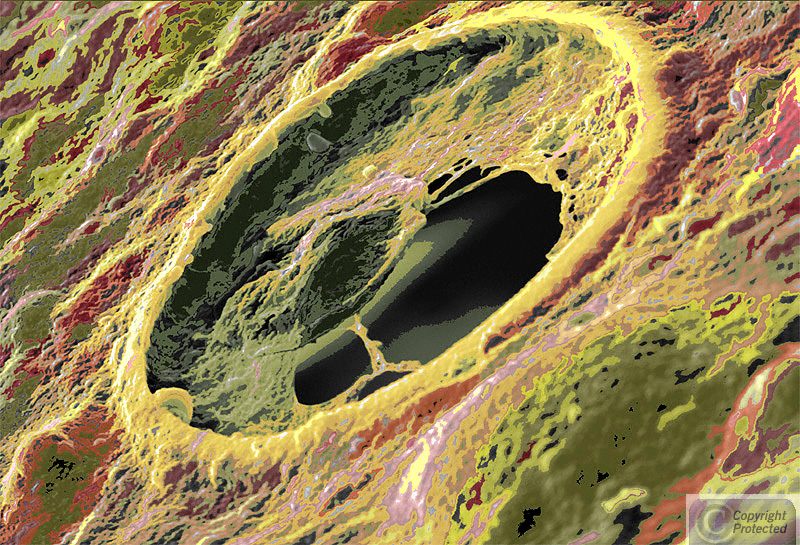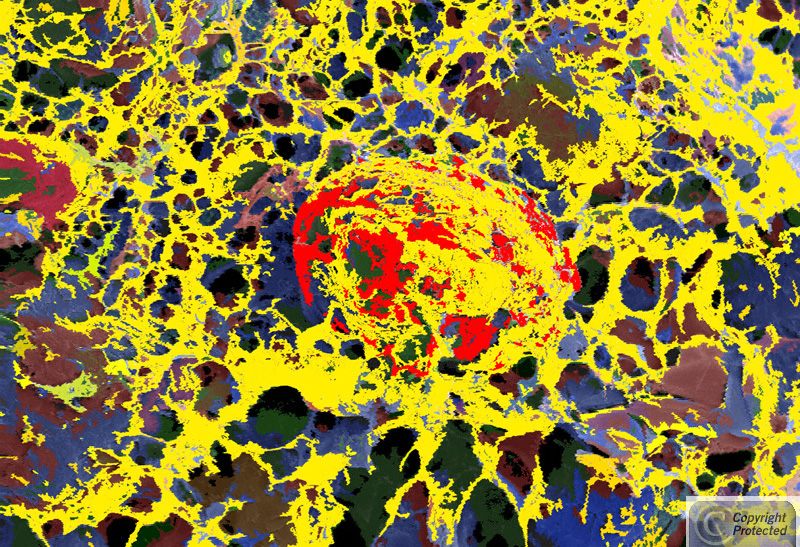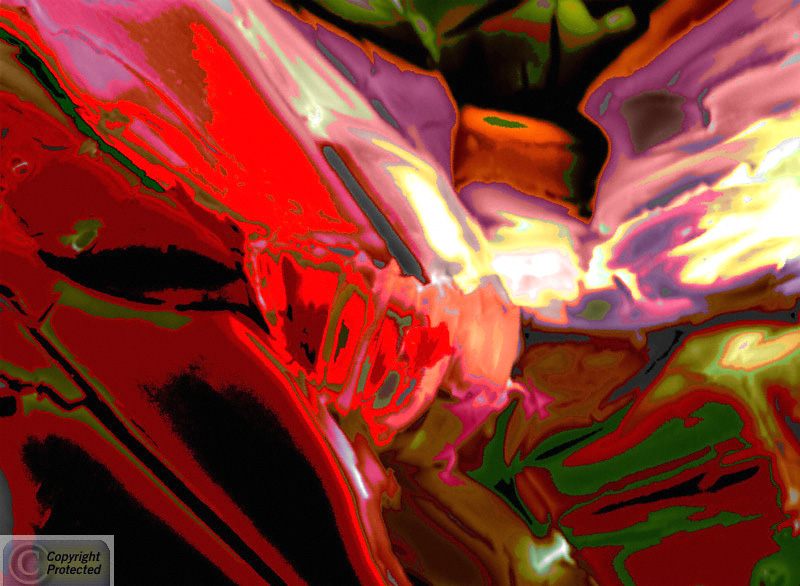How to Create ‘NanoArt’ Masterpieces By Manipulating Molecules

Cris Orfescu’s nanoartwork entitled “Power.” (All art provided by Cris Orfescu/Used with Permission)
Equally in love with art and science? Can’t choose between becoming a molecular biologist or a landscape painter? You may not have to. You could become a nanoartist.
NanoArt is artwork done on an atomic and molecular scale. With the aid of an electron microscope, nanoartists examine the textures of atoms and molecules, take microscopic images of them, and alter the resulting images to create surreal, alien works of art.
Materials scientist and pioneering nanoartist Cris Orfescu describes NanoArt as “a new art discipline at the art-science-technology intersections.” Orfescu began creating NanoArt as a way of both making something beautiful and raising awareness of the rise of nanotechnology, which operates on a scale that can be difficult to conceptualize. Technically speaking, a nanostructure can be no bigger than 100 nanometers in size. A nanometer is one billionth of a meter, or, as Orfescu put it in an email interview, 100,000 times smaller than the diameter of a human hair.

Each nanoartist’s method is a bit different, but every piece of NanoArt begins in a lab. The first step is to decide whether to create what Orfescu calls a “nanosculpture” or find a “nanolandscape.” A nanosculpture is a molecular structure that the artist manipulates via a chemical or physical process—such as laser carving—to create a unique image they then work with further. Conversely, a nanolandscape is a naturally occurring structure, such as a boron molecule.
“The making of the nanosculpture or the discovery of the nanolandscape is the most important part of a NanoArt piece creative process,” says Orfescu. Once a nanoartist decides which type will form the basis of the artwork, they decide on what element they want to use. For Orfescu, there is a definite frontrunner: carbon. “I like to work with this material and most of its compounds,” he says, because they offer “flexibility, beautiful shapes, [and] ease of sculpting.”

When the element is chosen, it’s time to get up close and personal with it to capture images. Because the subject is invisible to the human eye, the only way to take a look is through an electron or atomic microscope. (Orfescu uses a scanning electron microscope interfaced with a computer.) Since most raw electron microscopy produces images without color scales, the nanoartist must add any new hues they want to see.
The methods used for adding color and flair are up to each individual artist. Orfescu, for example developed his own approach to digital painting that takes a cue from traditional painting methods. He calls it “Digital Faux.” As he explains, “Like traditional faux, Digital Faux is done by overlaying translucent layers of color to create the perception of depth, volume, and form.” Instead of using paints or glazes, Orfescu manipulates the image digitally using Photoshop. But because his focus is on showing the “raw structure” of the image he has captured, he is careful not to get too wild with his digital paints.

In addition to allowing artists another mode of creative expression, NanoArt makes nanotechnology seem a little more human and friendly. Though nanotechnology has the potential to effect major positive changes in realms like health, electronics, and energy production, it doesn’t have the most friendly reputation. Apocalyptic “grey goo” scenarios, intelligent viruses, and self-replicating molecular robots are among the cinematically diabolical scenarios that have been conjured up.
“There are legitimate health and environmental concerns about nano products,” Orfescu says, “and I hope most of the nanotech companies are willing to develop their products responsibly.” Despite cautioning that “the general public should keep an eye of these developments and products,” Orfescu envisions a world where nanotech use is widespread and transformative, where medical nanotech could provide “a cancer treatment where the chemotherapy drugs will destroy only the sick cells and leave anything else intact.” It’s a vision that, as a nanoartist, he is helping usher along.

Intrigued by NanoArt? Want to give it a try? You can, but it’ll require a lot of money or a bit of relationship-building. While electron microscopy has become much cheaper and more ubiquitous in the modern age, you can’t just pick up your own microscope at the local Target. A quick Google search will turn up a couple of private laboratories that will let you look at things under an electron microscope for a fee, but that’s a steep price for a starving artist.
Orfescu has a couple of alternative suggestions. “There are two ways to become a nanoartist: being a scientist or teaming with a scientist,” he says. “Artists could find scientists interested in art at local universities or analytical labs and could start a very rewarding collaboration.”
Otherwise, you could start by working with Orfescu himself. He posts nano images that he has captured to his NanoArt 21 site, and encourages potential nanoartists to take them and turn them into their own art. He also organizes a number of competitions and exhibitions that any nanoartist is welcome to take part in.
Correction: Previously the NanoArt process was said to take “photographs” of the atomic material which is untrue as the nanostructures are much smaller than photons. The article has been updated to use the term, “imaging.”































Follow us on Twitter to get the latest on the world's hidden wonders.
Like us on Facebook to get the latest on the world's hidden wonders.
Follow us on Twitter Like us on Facebook